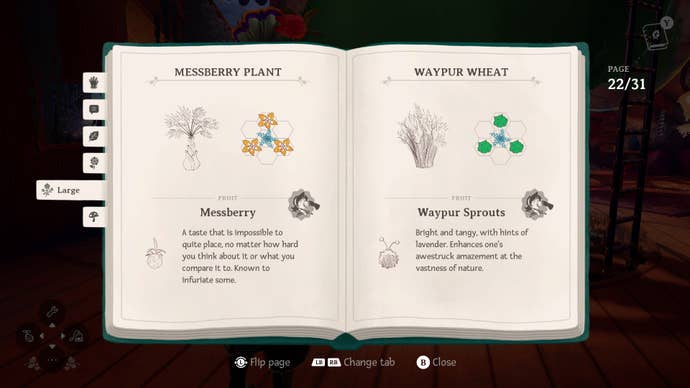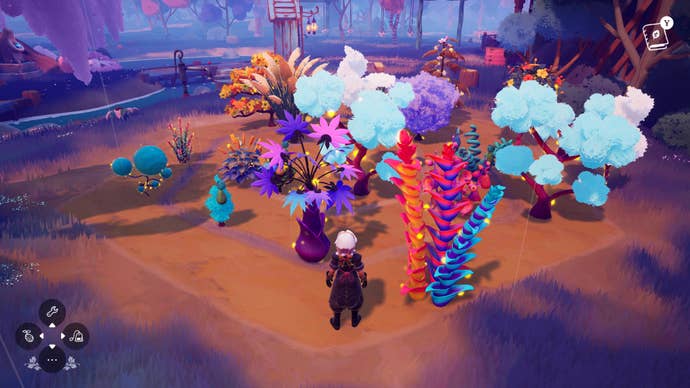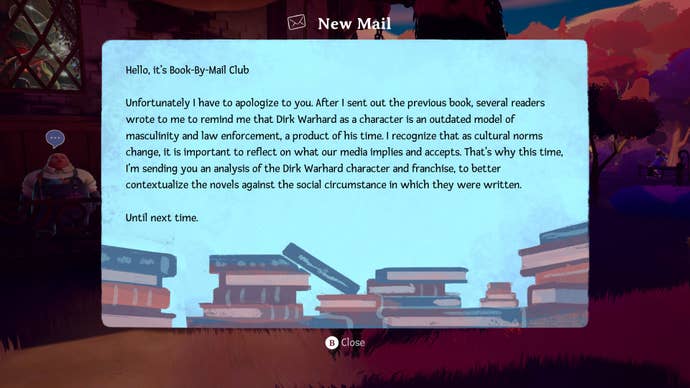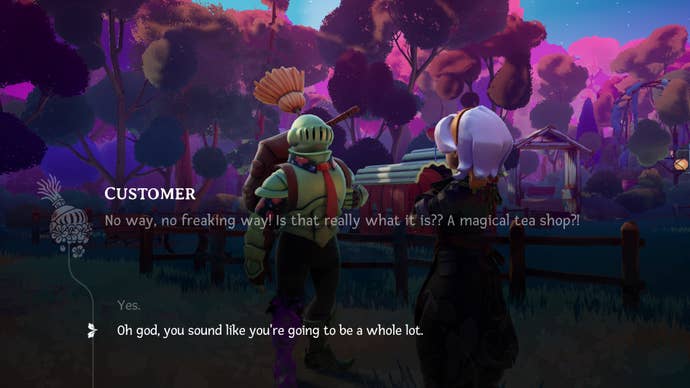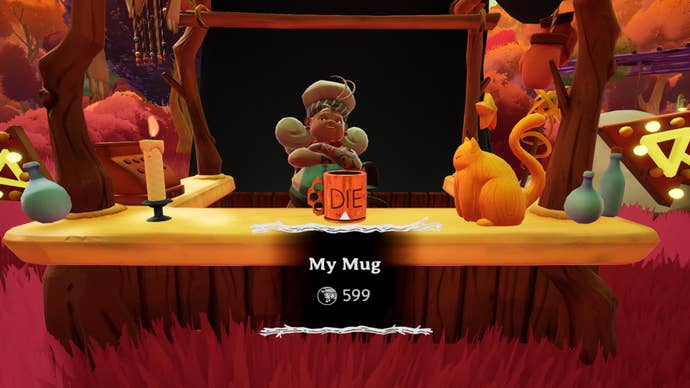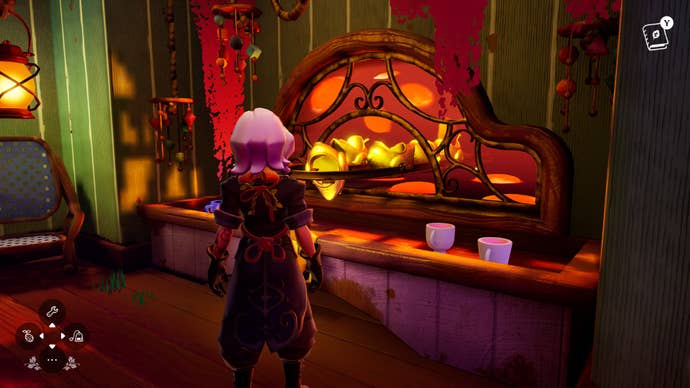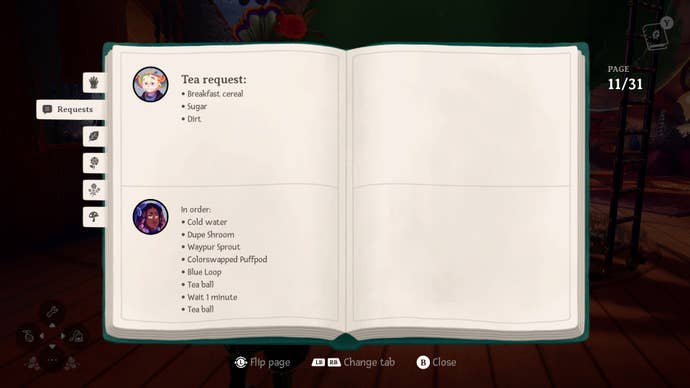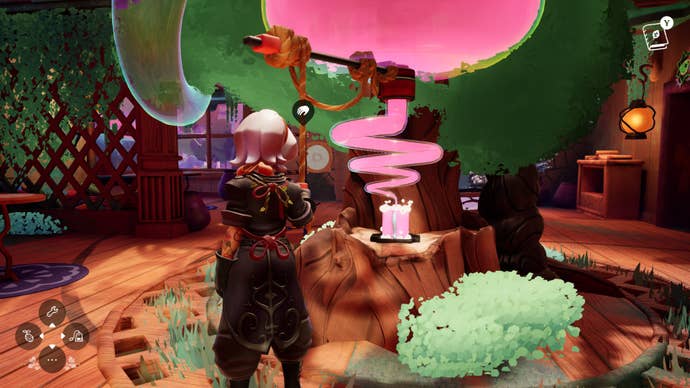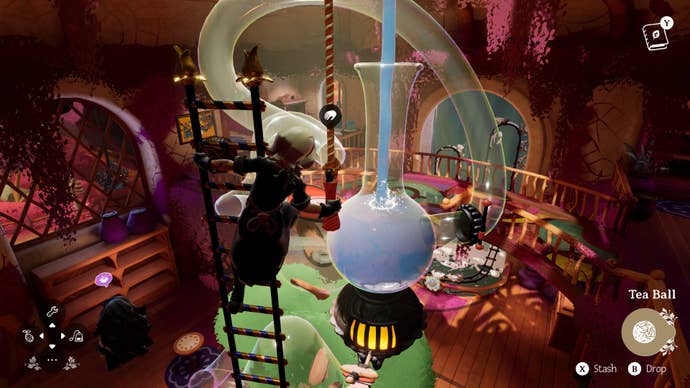Sweet tranquilitea, or trouble brewing?
or what to do next (sometimes it’s good for there to be nothing to do!)
This is where Wanderstop essentially splits into two games, or at least one spread across two layers.
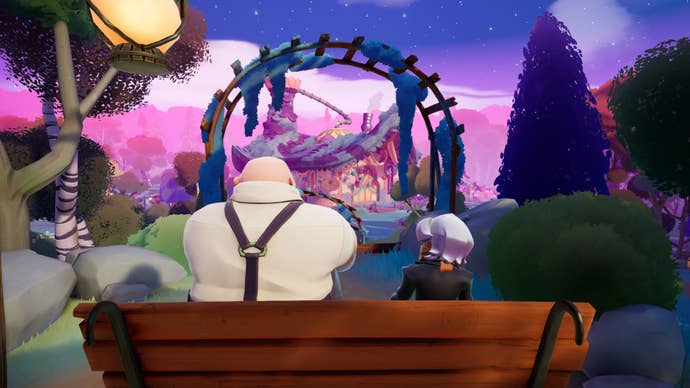
Wanderstop, at least, has some heft to back up its ostensibly warm-n-fuzzy vibes.)
Farming works like this: you begin with seeds of a couple different colours.
Planting a seed on its own turns it into a basic plant.

It’s a similar scenario with the tea-making process, which happens inside.
What you brew is, theoretically, up to you.
Wanderstop is as much a sandbox as it is a linear narrative.
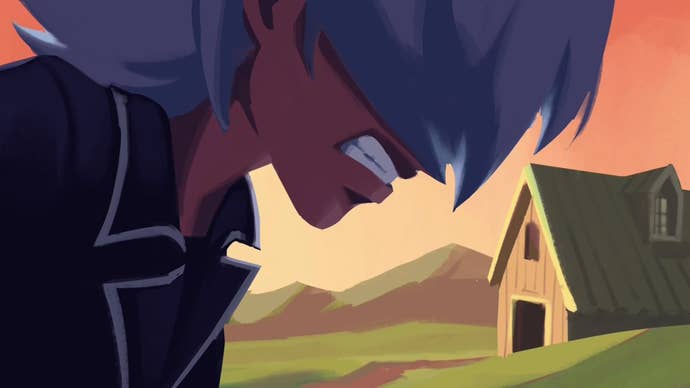
Where the two parts of Wanderstop link is in how you advance the story.
So far, so cosy.
But the real question is: does Wanderstop actually want you to advance the story at all?
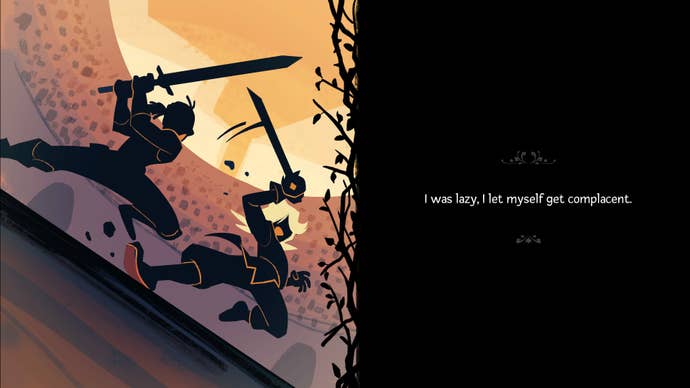
This is where things get a little muddled.
Much of Wanderstop’s writing feels dedicated to positioning it as something of an anti-game.
Well, here’s a task to feed the Pluffins five different types of tea for a reward.

No overt goals to work towards?
Here’s an exclamation mark above an NPC’s head.
No sense of progress?
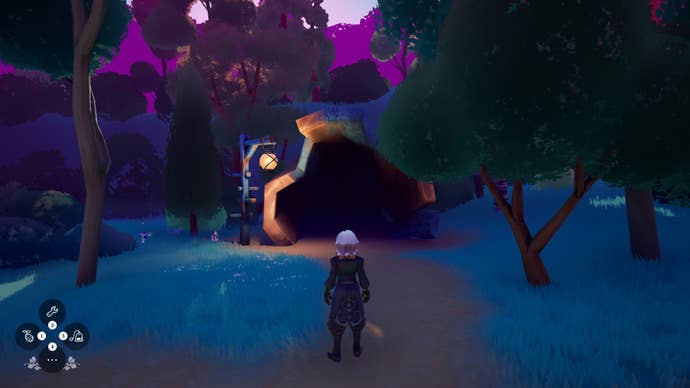
It just has to feel hypnotically brilliant in itself.
None of this is to say Wanderstop isn’t still utterly charming throughout.
Boro, for instance, is a delight to talk to, forever upbeat, gentle, and reassuring.
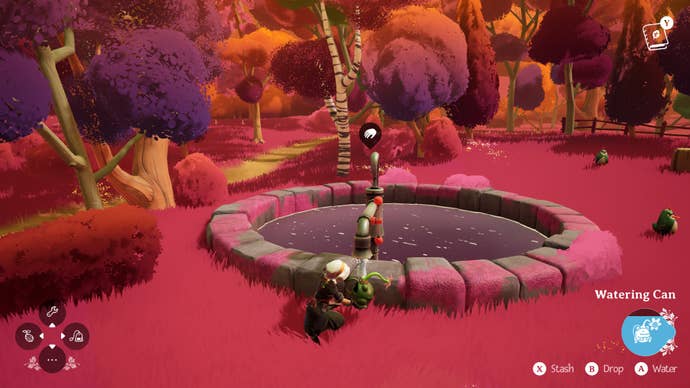
There are few structural or mechanical jokes, I found, when there might’ve been opportunity for more.
Readily available tutorials and “book of answers” for solutions to opaque problems.
I’ve been to many places like that here in the real world.
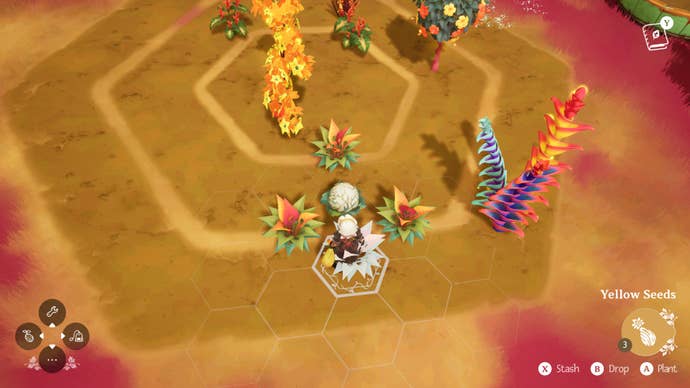
In many senses, that’s enough.
A copy of Wanderstop was provided for review byAnnapurna Interactive.
